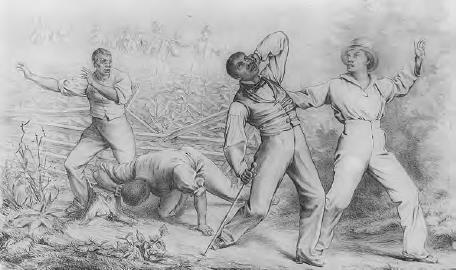Constitutional LawHistory of the Constitution |
What did the new Constitution say about slavery? |
The new Constitution did not directly address the slavery problem, probably because many of the members knew that members—particularly from the more agrarian, southern states—would not be willing to compromise on the measure. However, the vast majority of the delegates did not want to dissolve the Union over slavery. Many members from the southern states would leave the Convention rather than agree to the abolition of slavery.
The issue of slavery was closely tied to the question of representation in Congress. The southern states wanted to count slaves in their population numbers because they would obtain more seats in the House of Representatives. The northern states did not want to count slaves for purposes of legislative representation since slaves would not vote or pay taxes. The northern states also did not want the southern states to obtain more power.
The delegates eventually agreed to tie taxation to representation and count slaves as 3/5ths of a person. Some historians contend that the Convention agreed to this compromise over slavery and representation in exchange for the exclusion of slavery in the Northwest Ordinance of 1787. The Northwest Ordinance dealt with the settlement of lands in the West north of the Ohio River.
The Northern and Southern delegates bargained over the issues of slavery and trade well into the month of August. On August 24, the Committee of Eleven issued a report that contained four provisions: (1) Congress could not prohibit the exportation of slaves until 1800; (2) Congress could tax imported slaves; (3) Exports could not be taxed; and (4) Congress could pass navigation acts by simple majority. The northern states, which depended on commerce, wanted Congress to pass laws regulating trade.
The Constitution would extend the date to allow the importation of slaves until 1808. The Constitution also contained a clause, called the Fugitive Slave Clause, which allowed Southerners to go into northern states to recover runaway slaves. Unfortunately, the fugitive slave clause enabled the capture of free blacks in northern territory by southern slave owners.
Thus, the Constitution approved of slavery—if somewhat less than enthusiastically—by counting slaves for the population of states for representative purposes. It also protected the African slave trade for 20 years and guaranteed that masters could recover their runaway slaves. Because of its approval of slavery, the renowned abolitionist William Lloyd Garrison famously burned a copy of the Constitution, calling it a “covenant with death and an agreement with Hell.” However, not all members of the Convention approved of slavery. Gouvernour Morris famously referred to it as “the curse of Heaven on the states” that sanction it.
James Madison spoke about the Constitution and slavery at the Virginia ratification convention. Madison said: “The southern states would not have entered into the union of America, without the temporary possession of that trade.” However, Madison pointed out that under the Articles of Confederation, the slave trade could have continued forever. At least under the new Constitution, the importation of slaves would end in 20 years.
Also, the Constitution never uses the words “slave” or “slavery.”

